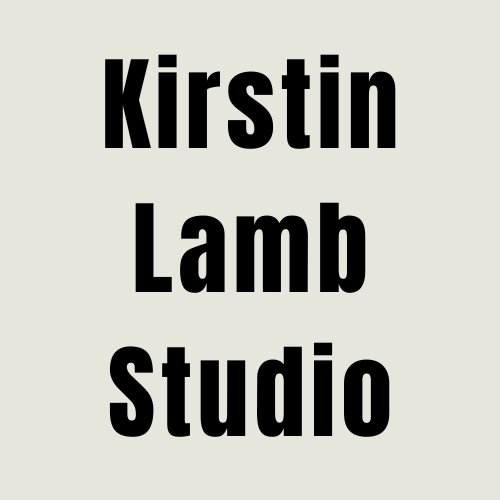KIRSTIN LAMB
BIO
Kirstin is a painter living in Providence, Rhode Island and working in Pawtucket, Rhode Island. She studied painting at the Rhode Island School of Design, graduating with an MFA in 2005, and she received her AB in Visual Art and Literatures in English from Brown University in 2001. Kirstin's work has been shown in venues across the country and abroad, recently showing at the Wassaic Project in Amenia, NY, Sarah Crown Gallery in Tribeca, NY, Overlap Gallery in Newport, RI, Geary in Millerton, NY, Cade Tompkins Projects in Providence, RI, Spring Break Art Fair in NY, the Fruitlands Museum in Harvard, MA and Providence College Galleries in Providence, RI, among others. She has attended residencies at the Atlantic Center for the Arts, Vermont Studio Center, Bunker Projects, the Wassaic Project, the Kimmel Harding Nelson Center for the Arts, The Ora Lerman Trust Soaring Gardens Artist Residency, and the Sam and Adele Golden Foundation. Kirstin recently completed a two-year contract curator position at The Yard, Williamsburg, a coworking space in Brooklyn that hosts solo and group shows quarterly, and has begun planning online and new curatorial projects in New England. Her work is in the collections of Fidelity Investments, Boston, MA, the Fruitlands Museum, Harvard, MA, and Providence College, Providence, RI, among others. Kirstin’s work is represented by Gallery NAGA in Boston.
Site images photographed by Karen Philippi Photography unless otherwise noted.
Where to find my work:
Woods Artist Statement
I make labor intensive paintings of gridded dots. These paintings frequently document fabric, wallpaper and photo-based source material. My most recent body of work has turned to the woods as its lone subject and focus.
I'm currently developing a body of paintings imaging woods that I have walked through on foot. The works are made from digital patterns I make from photographs, which I then paint on a wet media acetate. The patterns are derived from the photographs, but also abstract and blur the photograph to a greater or lesser degree, depending upon scale and complexity of the image. I like to consider it a contemporary way of documenting our extraordinary woodland spaces of North America, in the tradition of panoramic and scenic wallpaper.
I'm looking for a painting whose marks land between textile stitch, Impressionist mark and digital pixel. The paintings I'm making blur between a focused Photorealism, a computer-generated pattern and a fetishized repetition of an acrylic paint mark. Much of what I do is mix and organize color. There is high labor behind each work, yet the effect is immediate and present.
I want the experience of my paintings to be much like walking in the woods. Surrounded by a fabric of green, an excess of detail, the labor of making the painting stands as a devotional homage to the complexity and slow growth of the forest. The painting space both slows you down to a single greenspace and holds you within many particular and singular snapshots in time.
I hope to image the woods in its current state, as it exists now, near me. We have precious resources in both humble scrub brush or elegant old growth forests, all worth documenting as they are seen in our moment.
Pictures of Pictures Artist Statement
The studio is full of props. I collect ribbons, fabric, taxidermy, vintage photographs, skulls and paper ephemera. I organize these objects and stage compositions.
I create abstract pictures and portraits, large and small, to add to the still life objects staged in the space.
Much of my work depicts pictures of pictures or salon images. These pictures are derived from a fascination with Vanitas still life, cabinets of curiosity, and paintings of paintings ranging from Matisse's Red Studio to David Teniers' depictions of the collection of Archduke Leopold of Austria. I am interested in how paintings retain their relevance by taking on ideas of death of painting or a kind of comedic curation-as-painting
In much of my painting and drawing, I re-image my own work, embroideries, vintage imagery, and art historical imagery. My process involves a practice of using my paintings as props in still life paintings or interior paintings. I create paintings to paint them again. I re-use paintings in multiple arrangements, as interchangeable objects in an endlessly rotating still life or display.
About My Embroidery/Pattern Paintings
I call the gridded high-detail paintings on transparent acetate embroidery paintings. In order to paint the images that are not already patterns set on a grid, I generate a digitized grid and paint each gridded stitch by hand with acrylic and acrylic gouache on a wet media acetate. This is a simple process of re-painting a textile or pattern, sometimes an invented image-generated textile, sometimes an actual knit or textile pattern. The brush creates a one to one relationship of mark to stitch; each mark stands in for a move of the needle.
Many of the embroidery paintings I make are images of floral wallpaper cropped from French wallpaper of the 17th, 18th and 19th century. A series I recently created from images of French wall decoration made following the discovery of the ruins of Pompeii and Herculaneum. These works were deliberately cropped from texts discussing the shift in pattern before and after the discovery of those ruins, and the elaborate color and design shifts that occurred after the unearthing of the frescos. I am particularly interested in the political moment that created this shift and its need for this decoration and the need for the classical power invested in this kind of antiquity at that moment. I transfer this documentation to a deliberately cropped and somewhat modern space that reads as both woven and pixelated, primarily to reframe our gaze as contemporary (with the sheen of the acetate adding an extra screen-like feeling). The re-presenting of this particular decorative moment is for me an echoing of the darker uses of antiquity as a stand in for beauty and power.
